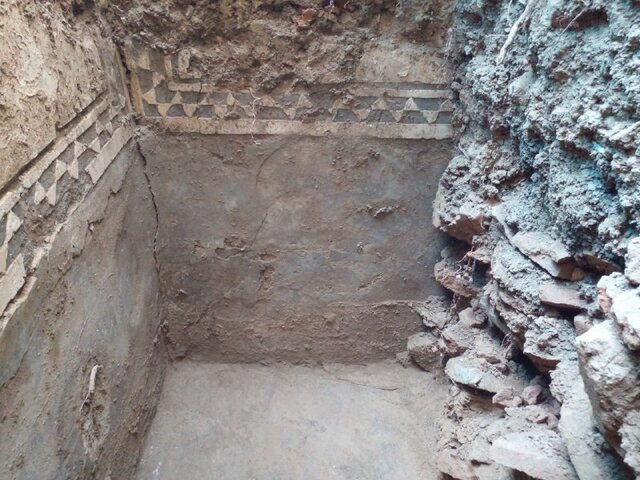Centuries-old ruins discovered in UNESCO-designated palace downtown Tehran

TEHRAN – A team of archaeologists has unearthed some ruins within Golestan Palace, which was once the official residence of the Qajar monarchs who ruled Persia (Iran) between 1789 and 1925.
The ruins are estimated to predate the UNESCO-registered complex, ISNA quoted Iranian archaeologist Ali Hazhbari as saying on Thursday.
Based on initial findings, the ruins are assessed to date from the late Zand era to the early Qajar epoch, the archaeologist said.
The discovered structure may have been constructed in a time between 240 to 220 years ago. However, to find an exact date, samples of its bricks should undergo an examination under the supervision of the Research Institute for Cultural Heritage and Tourism, he explained.
According to Hazhbari, its construction roughly spans a period from when Agha Mohammad Khan (the founder of the Qajar dynasty of Iran) fled from Karim Khan (the founder of the Zand Dynasty, ruling from 1751 to 1779) to the beginning of the reign of Fath Ali Shah (the second shah of the Qajar).
Currently, the Golestan Palace complex consists of eight significant palace buildings, many of which are now museums and the named gardens, a shared area of greenery enclosed by an outer wall with gates.
The World Heritage site is located in the heart and historic core of Tehran. When it was chosen by the Qajar ruling family to serve as the royal residence and center of power in the 19th century, it underwent additions and extensions before acquiring its most recognizable features.
The complex is a prime example of the Qajar era's architectural and artistic achievements, including the infusion of European themes and aesthetics into Persian art. In addition to serving as the Qajari kings' administrative headquarters, it also served as a community for recreation and housing, as well as a hub for artistic creation in the 19th century.
It became the origin and focal point of Qajari arts and architecture as a result of the latter activity. The architectural language and decorative art of the Qajar era, which are primarily represented in the legacy of Naser al-Din Shah, are richly attested to by the Golestan Palace, a singular and remarkable testimony.
As the earliest depictions of the synthesized European and Persian style that came to be so distinctive of Iranian art and architecture in the late 19th and early 20th centuries, it reflects artistic inspirations of European descent. It can be said that parts of the palace complex can therefore be viewed as the forerunners of the contemporary Iranian artistic movement.
AFM
Leave a Comment